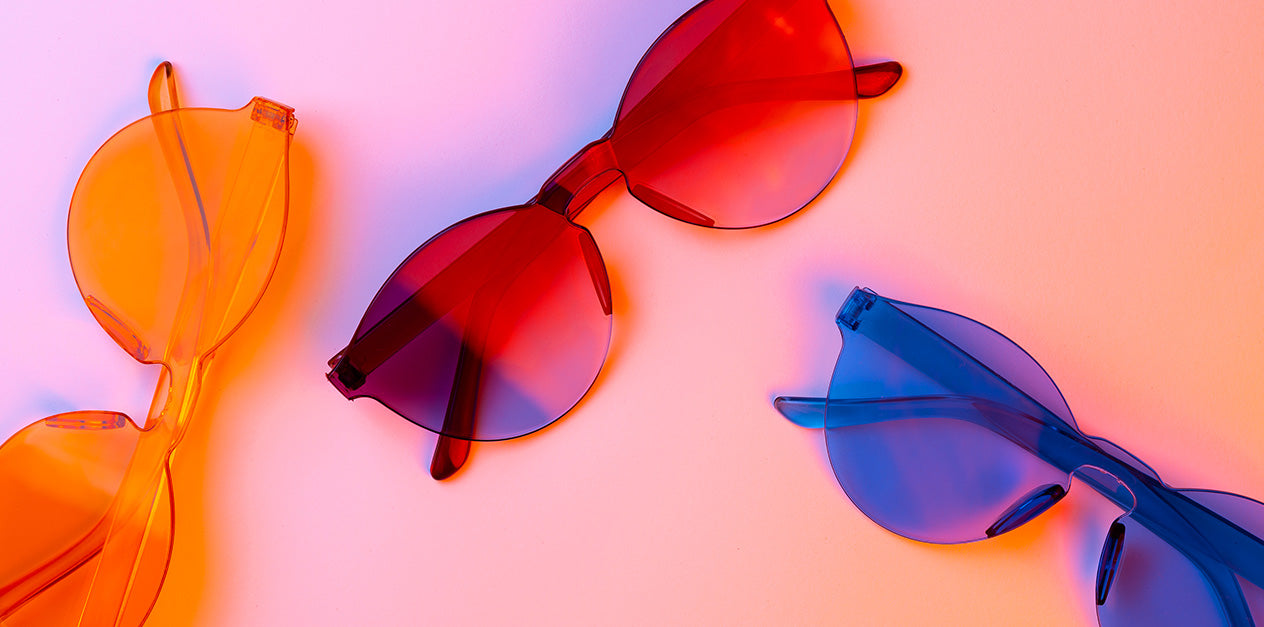What Is Blue Light? The Truth Behind Our Screens
Jan 26, 2021
Blue light is a hot topic in today’s digital world. While we hear most people talk about it in relation to sitting at a computer all day, the truth is that the most common source of blue light comes from the sun.
Blue light is all around us. From computer screens, phones, and digital devices, to fluorescent and LED lighting, it’s hard to escape the effects of blue light. And while the sun may be the most significant and most potent emitter of blue light, digital devices can be more detrimental to our eye health in the long run.
Let’s dive deeper into this topic to learn more about what blue light is and how to treat it.
What is blue light?
When eye doctors talk about blue light, we are talking about the wavelength of light that makes the color blue in a rainbow. Not all colors have the same effect on our eyes and our health.
Think of it like a rainbow, or ROYGBIV: ROYG (red, orange, yellow, green) is all visible light we see, BI (blue, indigo, violet) is blue light, and past all of that is ultraviolet or invisible radiation. In general, colors at the front of the spectrum (ROYG) have longer wavelengths, which means less energy. Those closer to the end, including blue light and UV light, have short wavelengths and more energy.
The blue light wavelength is the wavelength that goes through the front parts of our eyes and gets to the back of our eyes, making us feel tired, overworked, and strained.
What does blue light do to your eyes?
Most people ask us, “why is blue light bad?” The truth is, blue light is both good and bad for our health. Just like sunlight can provide Vitamin D, but also sunburn, blue light also offers similar benefits and drawbacks.
Here are the three main ways that blue light impacts our eyes and brains.
Impacts our mood
Just like sunlight, blue light can positively impact our mood during the day. These blue wavelengths enhance our memory, attention span, and cognitive abilities. Some doctors even prescribe light therapy, which utilizes HEV blue light rays, to help treat issues like season affective disorder.
Impacts our sleep
Science shows that blue light is helpful during the day in moderation, but too much of it at night can disrupt our natural circadian rhythms. When we are exposed to the blue wavelength light, our brain thinks it is being exposed to sunlight. This can mess up our sleep patterns. If you are exposing your eyes to blue light when you lay in bed, you may have a difficult time falling asleep.
Impacts our eye health
The blue light that enters our eyes can also have an impact on the health of our photoreceptors. Protecting these photoreceptors helps prevent their age-related macular degeneration. Those of us who use our computers for many hours a day can also experience tired and fatigued eyes from light exposure.
How to treat digital eye strain
Protecting our eyes from the cumulative effects of blue light can make our eyes feel more comfortable and stay healthier. Most doctors offer protection through blue light glasses or filters designed to help combat the adverse effects of blue light and digital eye strain. Carotenoid supplements are also a standard solution as well
Related Posts
- Choosing a selection results in a full page refresh.
- Press the space key then arrow keys to make a selection.

